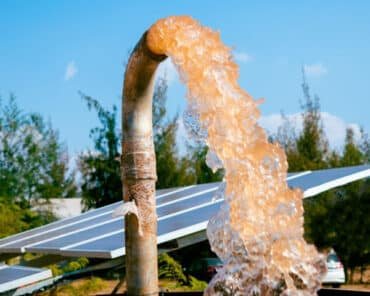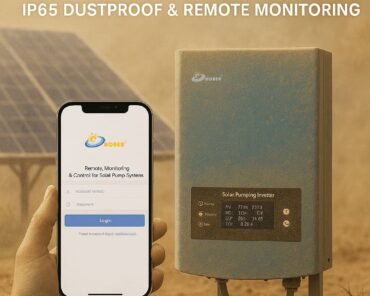As the CEO of HOBER, I’m intimately aware of the challenges and opportunities facing distributors and installers in the solar pump inverter and solar pump market. Leveraging remote monitoring in solar pump systems is not just a technical improvement; it’s a strategic business tool. By integrating smart solar pump inverters with remote monitoring capabilities, our B2B clients can significantly enhance operational efficiency and customer satisfaction, leading to increased profits and market share.

Why is Remote Monitoring Crucial for Your Business?
Remote monitoring stands at the forefront of modern solar pumping technology. For distributors and installers, this technology means being able to offer clients real-time data access, proactive maintenance, and system optimization. This not only improves system reliability but also positions your business as a provider of advanced, value-added services.
The Role of Smart Solar Pump Inverters in Remote Monitoring
A solar pump inverter with remote monitoring capability is a game-changer. It allows you and your clients to track performance, diagnose issues, and make adjustments remotely. This means reduced downtime and costs for on-site visits, translating into more competitive service offerings and increased customer loyalty.

Setting Up for Success: Remote Module Installation
Proper installation of remote monitoring modules is crucial. These modules, whether WiFi or 4G, should be installed in locations that are safe from environmental hazards like direct sunlight, dust, and moisture. An optimally placed module ensures uninterrupted data transmission, key to effective remote system management.
The Power of Real-Time Data in Your Hands
Real-time data is the cornerstone of effective remote monitoring. Accessing this data enables you to provide immediate support to your clients, troubleshoot problems swiftly, and optimize system performance. This proactive approach can significantly reduce system downtime, a major selling point for your business.
Enhancing Customer Service with Remote Diagnostics
Remote diagnostics transform how you interact with your clients’ systems. You can identify and address issues before they escalate, offering a level of service that sets your business apart. This capability not only saves time and resources but also boosts your reputation as a reliable and technologically advanced service provider.
Customization and Control: Tailoring Systems to Client Needs
Remote monitoring allows for the customization of solar pump systems to meet specific client needs. Adjusting settings remotely to match varying environmental conditions or operational requirements enhances system efficiency and client satisfaction, leading to repeat business and referrals.
Strengthening Client Relationships through Transparent Operations
By offering clients access to the same real-time data and controls, you foster a sense of transparency and trust. This collaborative approach to system management empowers clients, strengthens your relationship with them, and enhances their loyalty to your brand.
Conclusion
In the competitive world of solar pump inverters and solar pumps, remote monitoring is not just a technological feature—it’s a business strategy. By adopting and effectively utilizing these systems, distributors and installers can offer superior service, forge stronger client relationships, and ultimately drive greater profits and growth.









